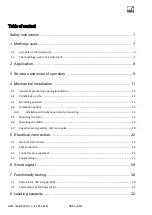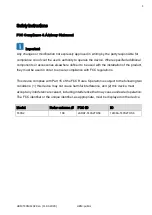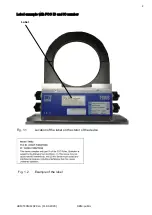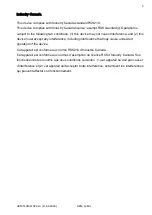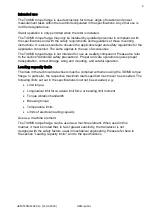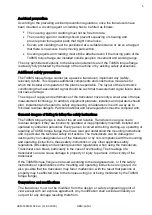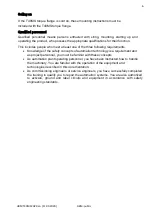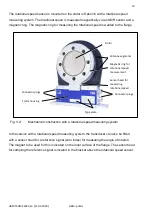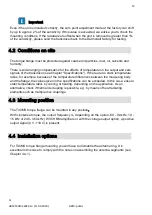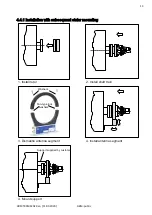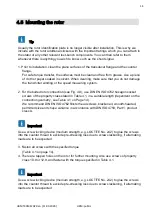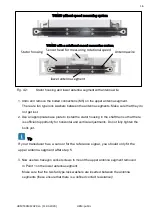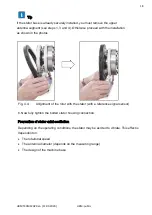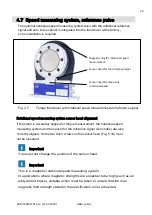
5
HBM T40MS 2020 en (11.03.2020) HBM: public
Accident prevention
According to the prevailing accident prevention regulations, once the transducers have
been mounted, a covering agent or cladding has to be fitted as follows:
•
The covering agent or cladding must not be free to rotate.
•
The covering agent or cladding should prevent squeezing or shearing and
provide protection against parts that might come loose.
•
Covers and cladding must be positioned at a suitable distance or be so arranged
that there is no access to any moving parts within.
•
Covering agents and cladding must still be attached even if the moving parts of the
T40MS torque flange are installed outside peoples' movement and working range.
The only permitted exceptions to the above requirements are if the T40MS torque flange
is already fully protected by the design of the machine or by existing safety precautions.
Additional safety precautions
The T40MS torque flange cannot (as a passive transducer) implement any (safety-
relevant) cutoffs. This requires additional components and constructive measures for
which the installer and operator of the plant is responsible. The layout of the electronics
conditioning the measurement signal should be such that measurement signal failure does
not cause damage.
The scope of supply and performance of the transducer covers only a small area of torque
measurement technology. In addition, equipment planners, installers and operators should
plan, implement and respond to safety engineering considerations in such a way as to
minimize residual dangers. Pertinent national and local regulations must be complied with.
General dangers of failing to follow the safety instructions
The T40MS torque flange is state of the art and reliable. Transducers can give rise to
residual dangers if they are incorrectly operated or inappropriately mounted, installed and
operated by untrained personnel. Every person involved with siting, starting-up, operating or
repairing a T40MS torque flange must have read and understood the mounting instructions
and in particular the technical safety instructions. The transducers can be damaged or
destroyed by non-designated use of the transducer or by non-compliance with the mounting
and operating instructions, these safety instructions or any other applicable safety
regulations (BG safety and accident prevention regulations) when using the transducers.
Transducers can break, particularly in the case of overloading. The breakage of a
transducer can also cause damage to property or injury to persons in the vicinity of the
transducer.
If the T40MS torque flange is not used according to the designated use, or if the safety
instructions or specifications in the mounting and operating instructions are ignored, it is
also possible that the transducer may fail or malfunction, with the result that persons or
property may be affected (due to the torques acting on or being monitored by the T40MS
torque flange).
Conversions and modifications
The transducer must not be modified from the design or safety engineering point of
view except with our express agreement. Any modification shall exclude all liability on
our part for any damage resulting therefrom.
Summary of Contents for T40MS
Page 1: ...HBM T40MS 2020 en 11 03 2020 HBM public Mounting Instructions English T40MS...
Page 2: ...HBM T40MS 2020 en 11 03 2020 HBM public...
Page 38: ...34 HBM T40MS 2020 en 11 03 2020 HBM public 11 Dimensions 11 1 Without speed measuring system...
Page 39: ...35 HBM T40MS 2020 en 11 03 2020 HBM public 11 2 With speed measuring system...



